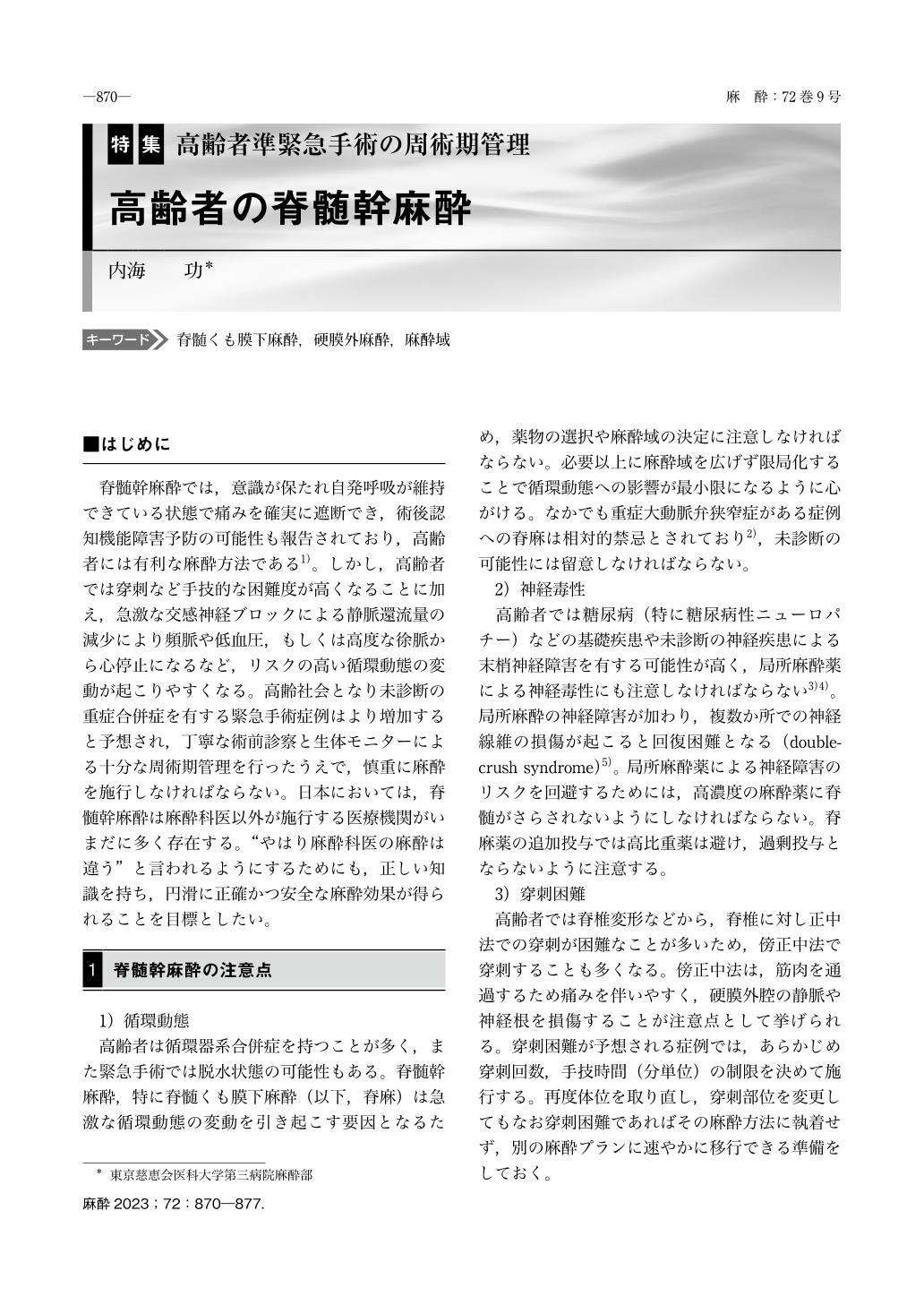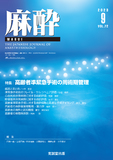Japanese
English
- 有料閲覧
- Abstract 文献概要
- 1ページ目 Look Inside
- 参考文献 Reference
はじめに
脊髄幹麻酔では,意識が保たれ自発呼吸が維持できている状態で痛みを確実に遮断でき,術後認知機能障害予防の可能性も報告されており,高齢者には有利な麻酔方法である1)。しかし,高齢者では穿刺など手技的な困難度が高くなることに加え,急激な交感神経ブロックによる静脈還流量の減少により頻脈や低血圧,もしくは高度な徐脈から心停止になるなど,リスクの高い循環動態の変動が起こりやすくなる。高齢社会となり未診断の重症合併症を有する緊急手術症例はより増加すると予想され,丁寧な術前診察と生体モニターによる十分な周術期管理を行ったうえで,慎重に麻酔を施行しなければならない。日本においては,脊髄幹麻酔は麻酔科医以外が施行する医療機関がいまだに多く存在する。“やはり麻酔科医の麻酔は違う” と言われるようにするためにも,正しい知識を持ち,円滑に正確かつ安全な麻酔効果が得られることを目標としたい。
The most important issue in neuraxial anesthesia for the elderly is to avoid and manage sudden changes in circulatory dynamics, most commonly severe hypotension, while maintaining the minimal required level of anesthesia. There are no neuraxial anesthesia techniques specific to elderly patients, but some issues related to needle insertion difficulties or co-morbidities occurring more frequently in elderly patients require additional considerations.
Thorough familiarity with basic concepts and techniques is crucial, but more important than the choice of anesthetic technique is adequate pre-operative assessment with planning of appropriate monitoring.
Anesthetics are usually selected according to surgical procedure and complications, but in the ageing society, the number of emergency surgeries for patients with undiagnosed complications is expected to increase. Thus, dosing of anesthetic agents must be carefully calculated, and their administration must be adjusted for the effect, for example for spinal anesthesia, it is better to start with lower doses and if area of the effect is not sufficient, to add another dose of anesthetic. It is also important to be prepared for changes in planned anesthesia methods, without being too fixed with the initial technique, when difficult puncture or FSA have been suspected.

Copyright © 2023 KOKUSEIDO CO., LTD. All Rights Reserved.


